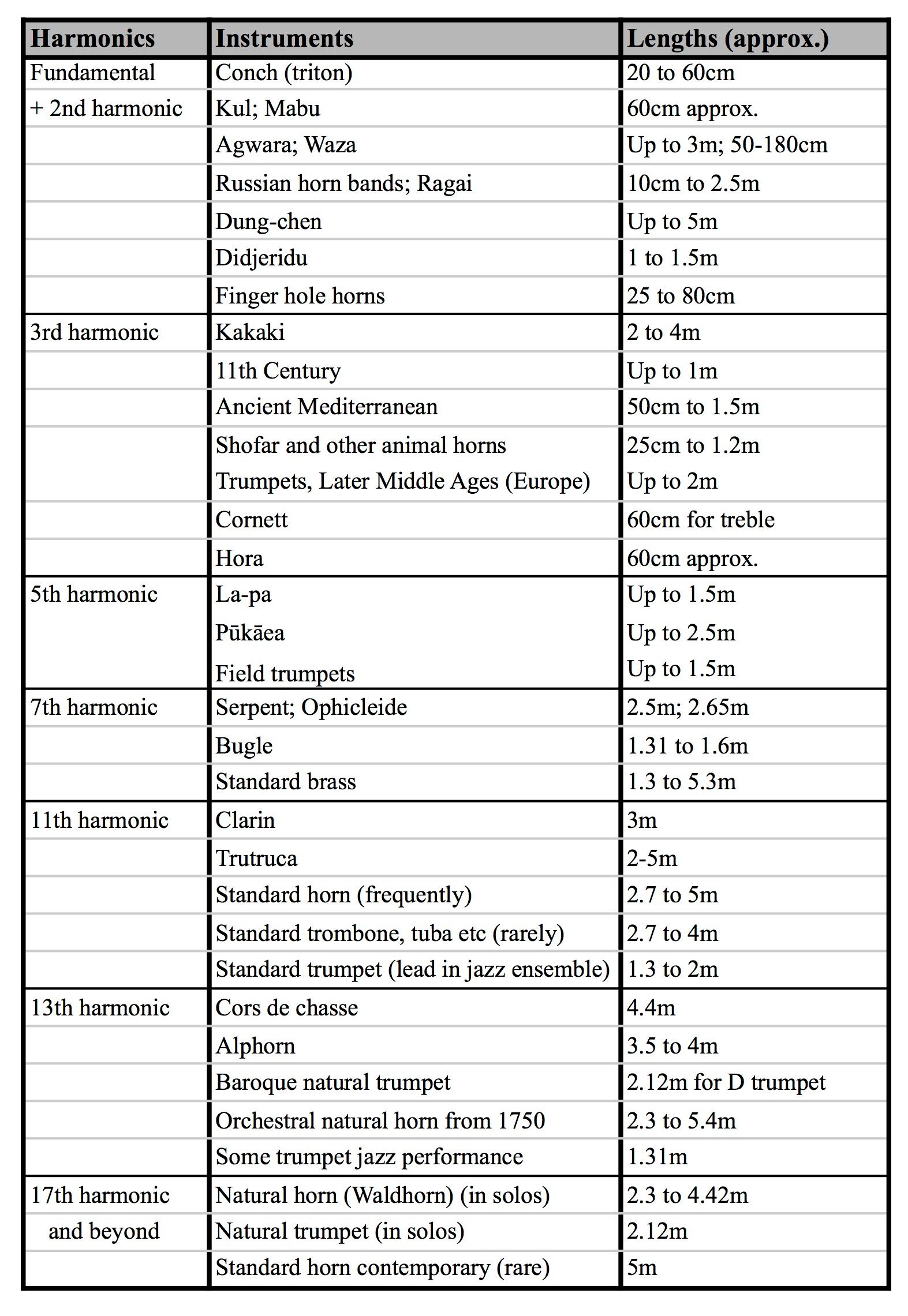A convenient label is labrosone, a term used in the landmark book Brass Instruments: Their History and Development by musicologist and instrument researcher Anthony Baines (page 40), though I haven't seen it used elsewhere!
I have grouped each instrument by the harmonics a player can produce. This grouping is a new classification of labrosones using the tuning theory of musical pioneer Harry Partch. His book Genesis of a Music, published in 1974, has details of his theories. A prime numbered harmonic is the limit for each category. The reason for this only becomes clear when dealing with the larger context of just intonation. (See my thesis if you are keen: http://ro.uow.edu.au/theses/3419/.)
Briefly,
- each even numbered harmonic is less significant than each odd numbered harmonic
- each odd numbered harmonic is less significant than each prime numbered harmonic
- each prime numbered harmonic establishes a pitch limit. (Just intonation deals with pitches observed as ratios and have been considered such for millennia, whereas the understanding of harmonics has only been known for a few hundred years.)
1. Every harmonic that sounds an octave higher than a lower harmonic is also known as doubling the harmonic series number. Harmonic 2 is an octave above harmonic 1, ratio 2:1. Harmonic 4 is an octave above harmonic 2, ratio 4:2. This is invariable. 6:3, 10:5, 14:7 etc. In other words the only new pitch information is the octave which is not so musically significant as music is not made up of only octaves and unisons.
2. Every odd numbered harmonic provides a new pitch quality though some odd numbers can be observed as multiples of other odd numbers therefore they don't provide as much pitch information as prime numbered harmonics.
Harmonic 3 when played after or at the same time as harmonic 2 produces the wonderful and familiar sound usually called the perfect 5th, and perfect it is indeed when played steadily and with well focused tone. This is shown as the ratio 3:2. Ratio 3:1 is the perfect 12th.
Harmonic 6 is an octave above harmonic 3, so is not a distinctly new sound/interval.
Harmonic 9 gives the sound of adjacent perfect 5ths, such as A to E to B. It also gives the sound of the whole tone (ratio 9:8). Yes, this is a new interval but is a product of 3:2. Chains of 3:2s can provide wondrous music, indeed and large chains can give the sound of any other desired interval, however many unique intervals are discovered easily by exploring other prime numbered harmonics.
3. Every prime numbered harmonic provides a unique pitch quality. Prime numbered harmonics 2, 3, 5, 7, 11, 13 are easily played on the (French) horn and are achievable on a number of other labrosones.
One blog each month will look at some instruments that can be classified by each prime numbered harmonic. Later blogs will explore writing music for each instrument type. To start this process the table below shows a number of instruments, many of which may appear unfamiliar, the prime limit they mainly belong to and the length of the instrument.

